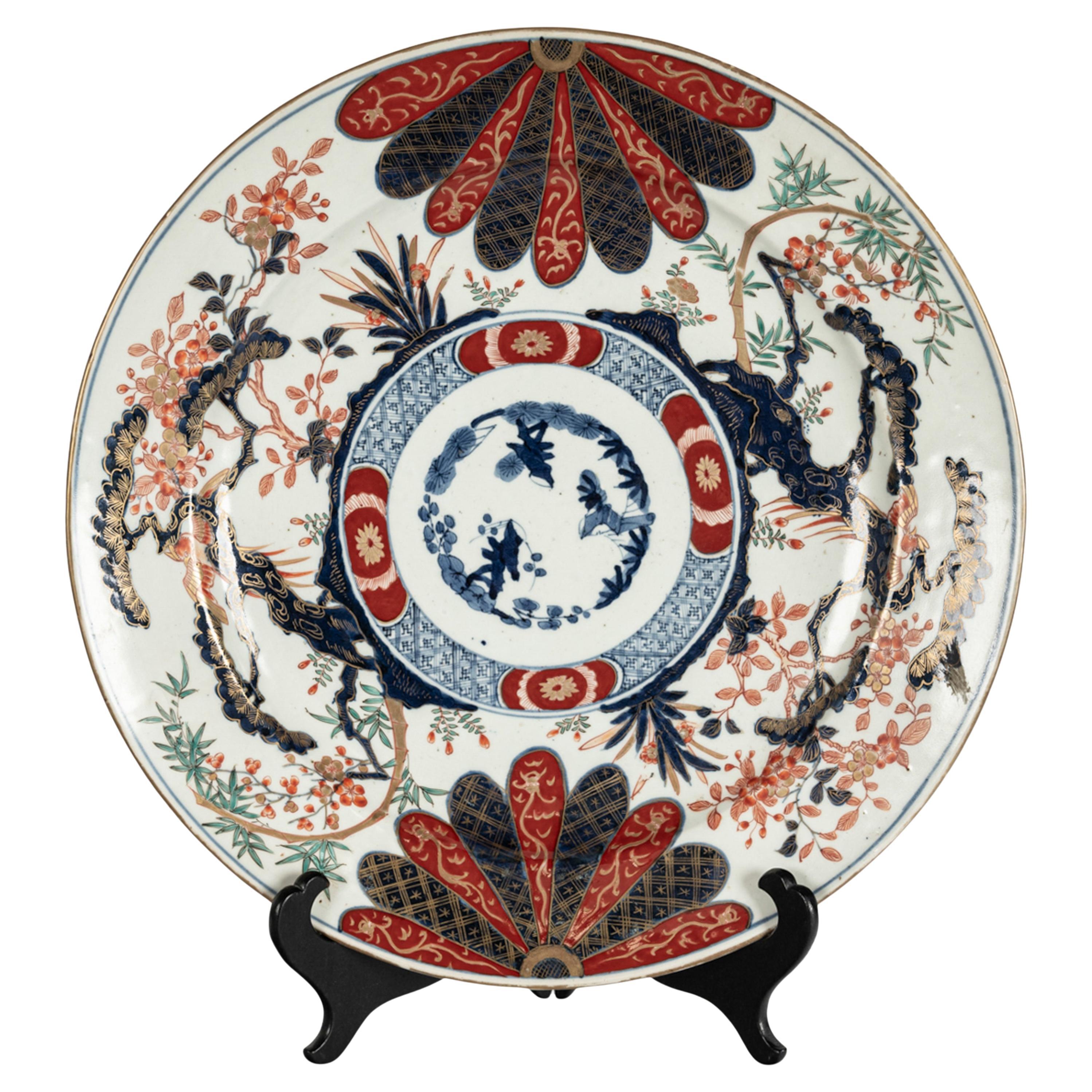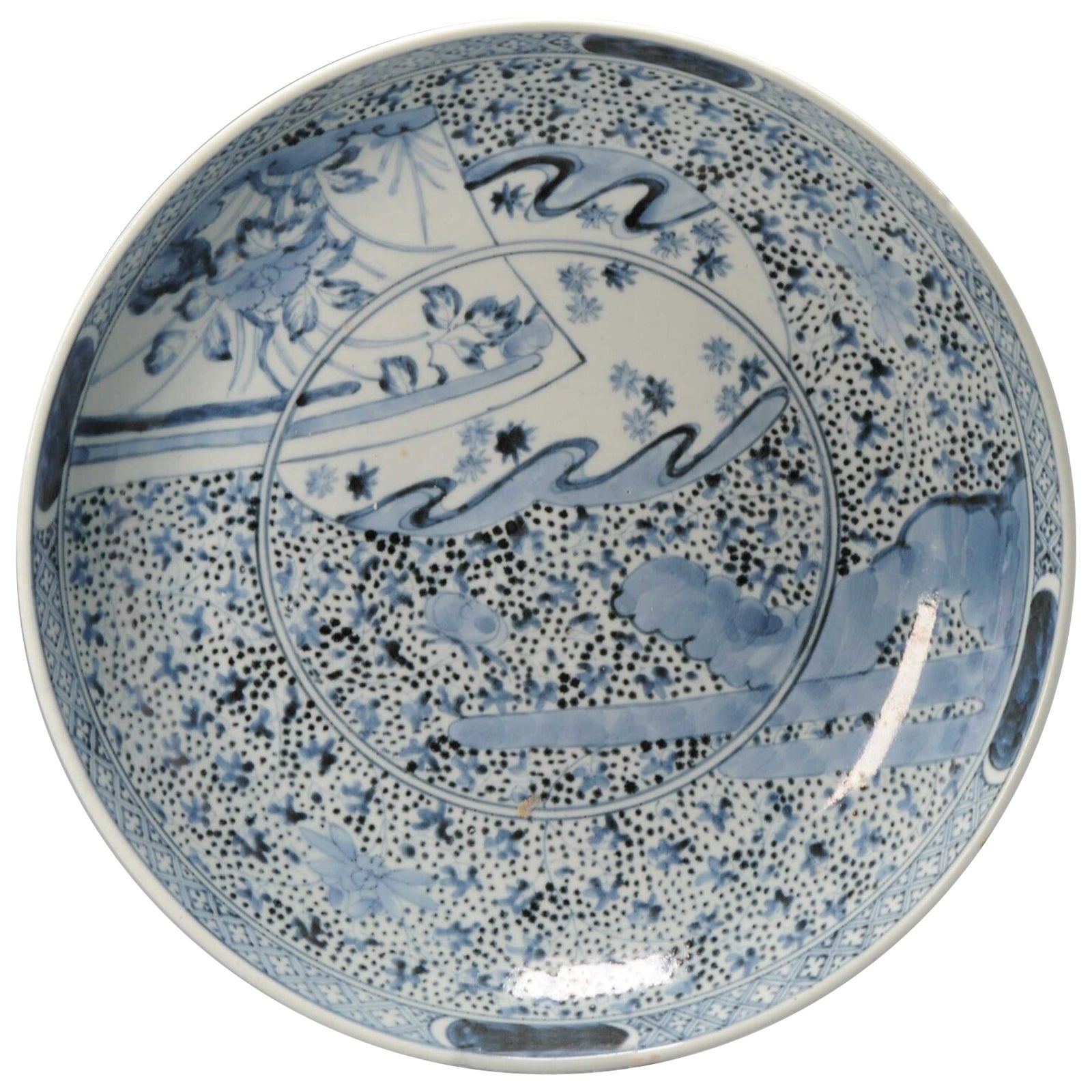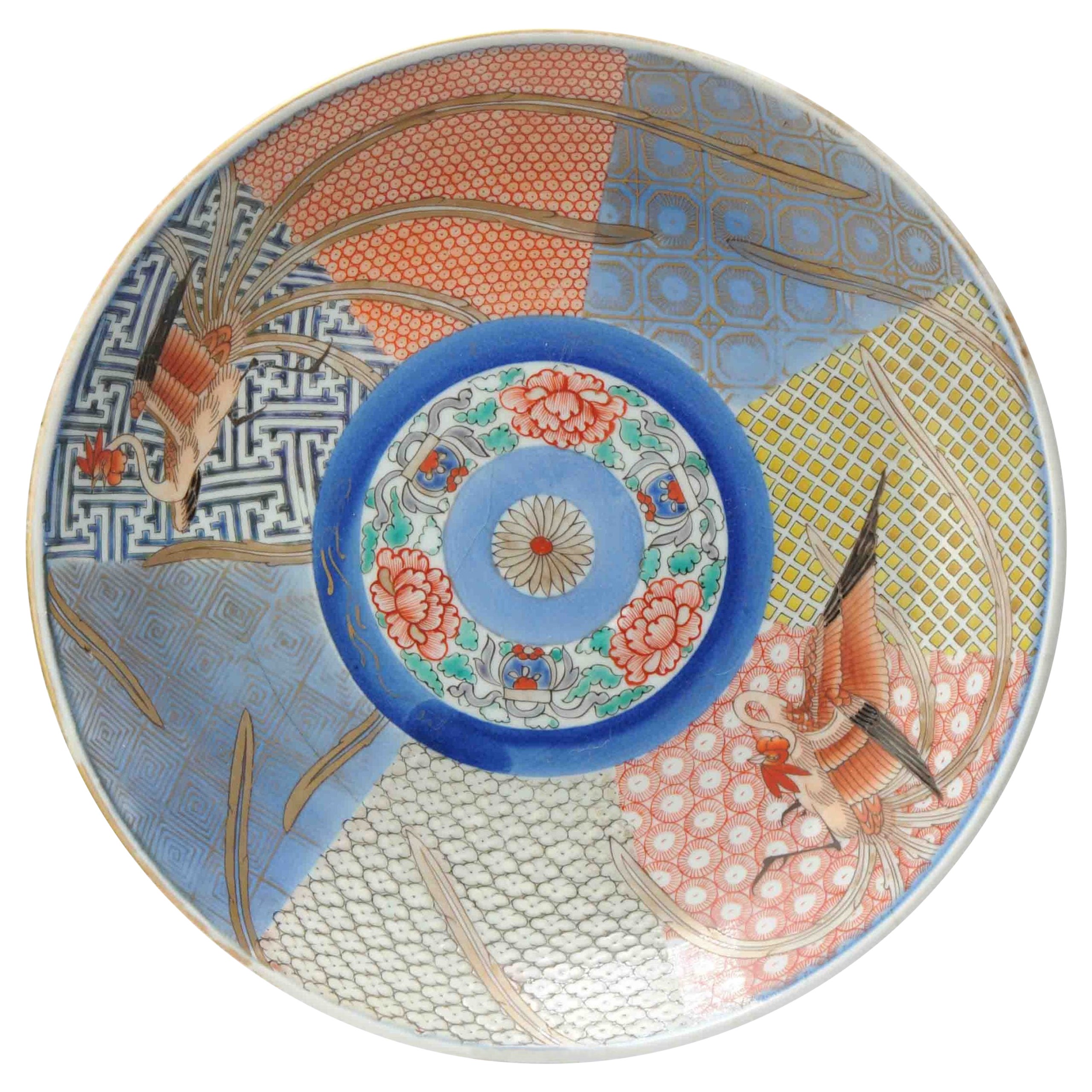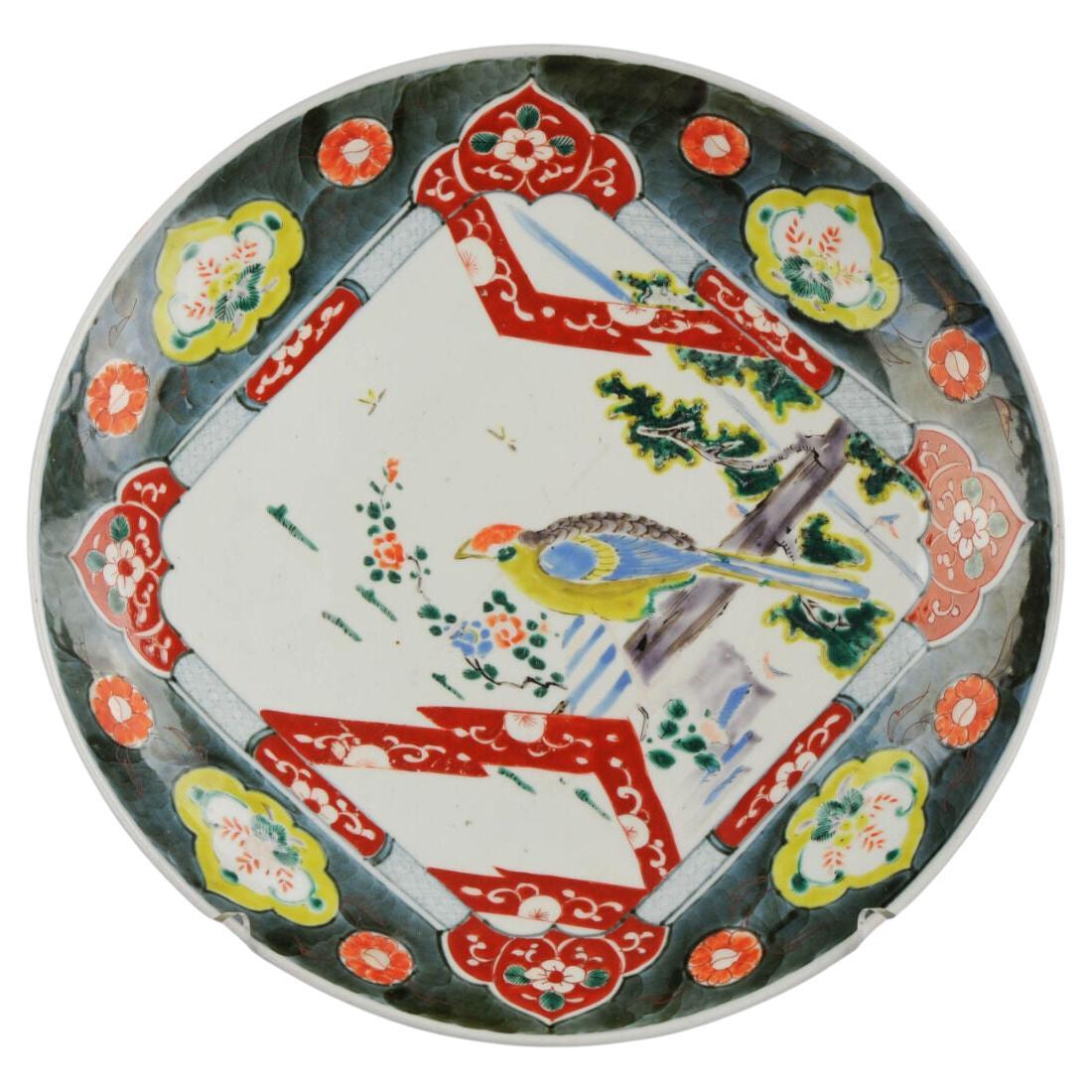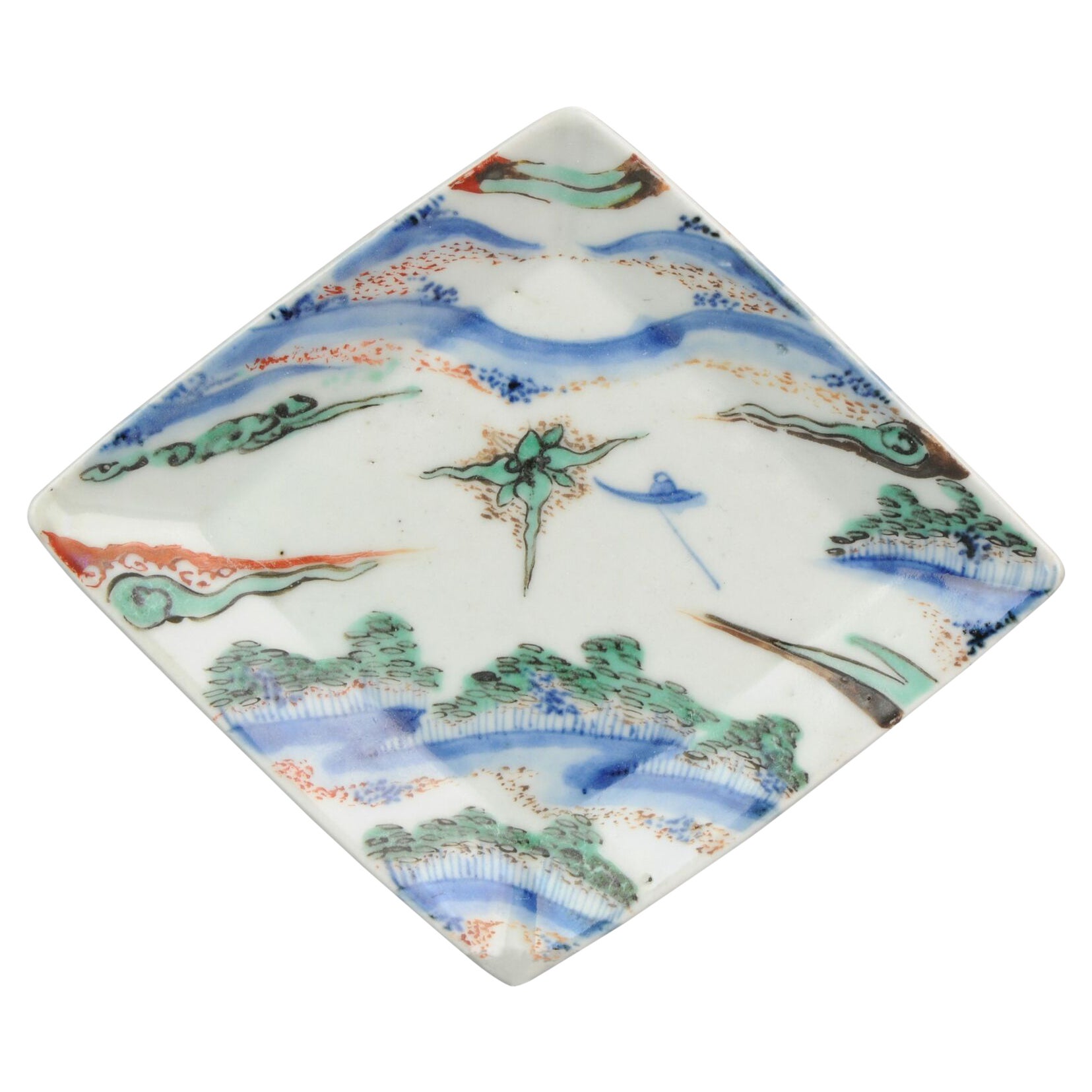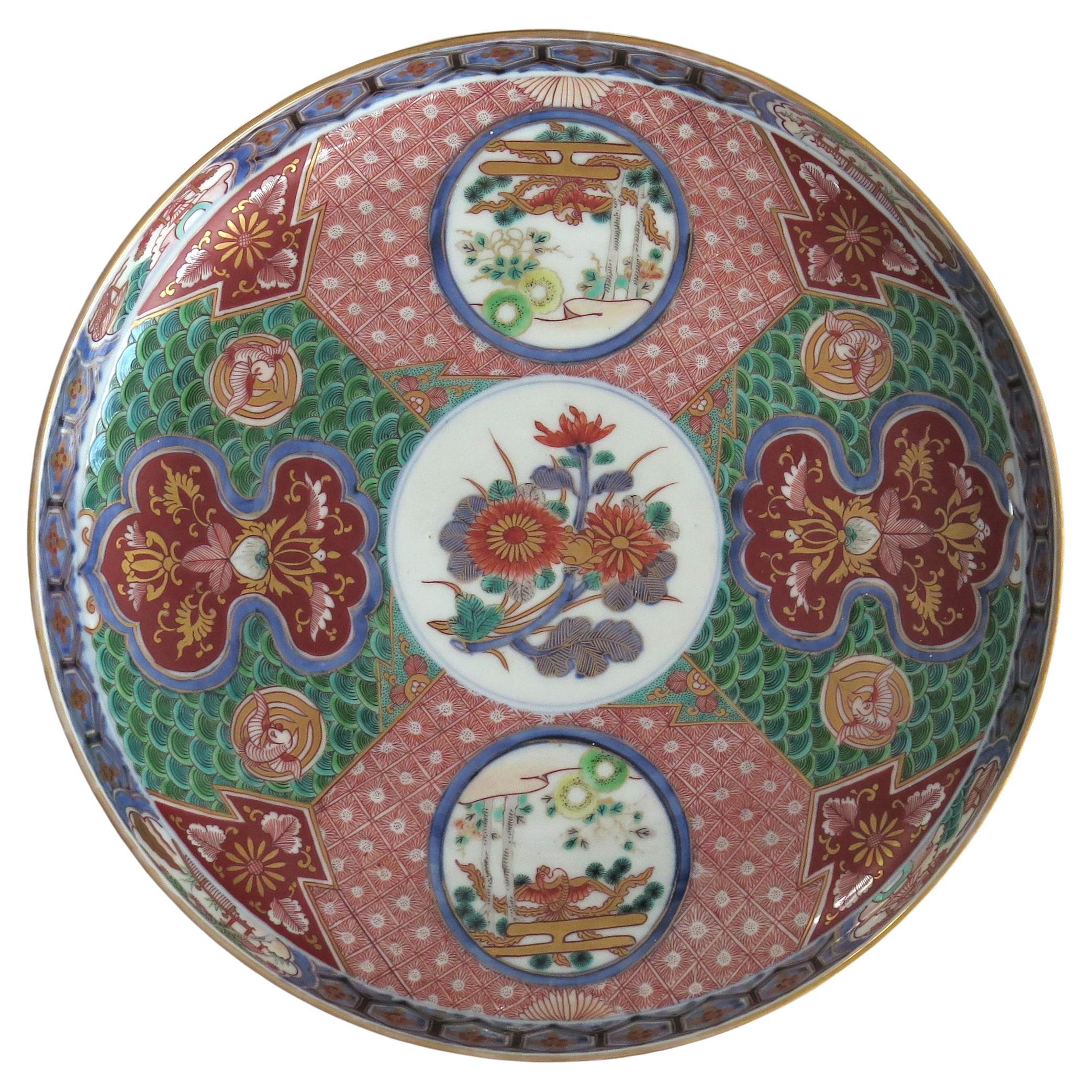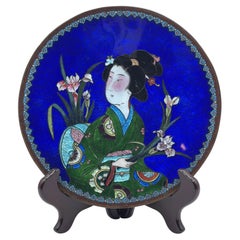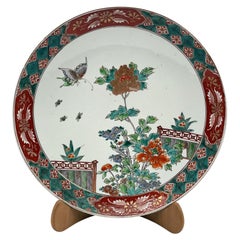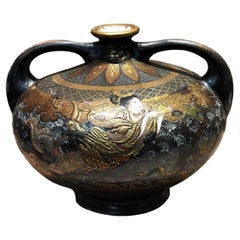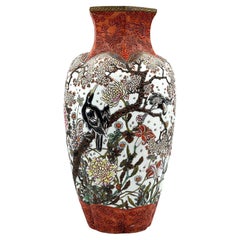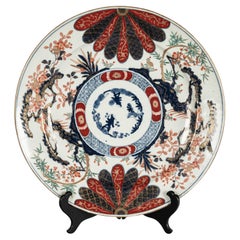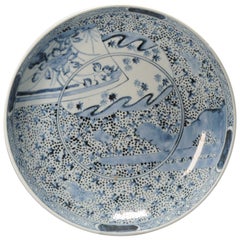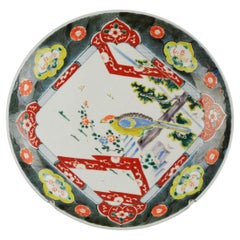Items Similar to Japanese Edo Period Nabashima Porcelain Plate with Three Sake Bottles, Ca. 1850
Want more images or videos?
Request additional images or videos from the seller
1 of 6
Japanese Edo Period Nabashima Porcelain Plate with Three Sake Bottles, Ca. 1850
$12,500
£9,438.85
€10,877.24
CA$17,642.81
A$19,450.80
CHF 10,176.03
MX$238,625.18
NOK 128,096.06
SEK 119,790.08
DKK 81,231.53
About the Item
Japanese Edo Period Nabashima Porcelain Blue Plate with Three Sake Bottles, Ca. 1850
PERIOD
Edo Period ((1603-1868) – Mid-19th Century
PROVENANCE
A similar example sold in the Collection of Peggy and David Rockefeller, Christie’s Lot #931.
DIMENSIONS
Diameter: 8.5 inches
ABOUT
A Japanese Edo Period Nabeshima porcelain blue plate with three sake bottles is a fine and rare example of high-quality porcelain made specifically for the Shogunal elite during the late 17th to 18th century. A Nabeshima porcelain plate with three sake bottles is a rare and refined piece from the Edo Period, representing the height of elite Japanese ceramic artistry. It combines aesthetic elegance with symbolic meaning, produced under strict control for the highest echelons of society. Being authentic and in good condition, this plate is a significant collector's item.
- Dimensions:Height: 1 in (2.54 cm)Diameter: 8.5 in (21.59 cm)
- Style:Japonisme (Of the Period)
- Materials and Techniques:
- Place of Origin:
- Period:
- Date of Manufacture:ca. 1850
- Condition:Wear consistent with age and use. We make our best effort to provide a fair and descriptive condition report. Please examine photos attentively, as they are part of the description. Send us a message to request more details or discuss price.
- Seller Location:New York, NY
- Reference Number:1stDibs: LU2819345267102
About the Seller
5.0
Gold Seller
Premium sellers maintaining a 4.3+ rating and 24-hour response times
Established in 1993
1stDibs seller since 2017
85 sales on 1stDibs
Typical response time: 11 hours
- ShippingRetrieving quote...Shipping from: New York, NY
- Return Policy
Authenticity Guarantee
In the unlikely event there’s an issue with an item’s authenticity, contact us within 1 year for a full refund. DetailsMoney-Back Guarantee
If your item is not as described, is damaged in transit, or does not arrive, contact us within 7 days for a full refund. Details24-Hour Cancellation
You have a 24-hour grace period in which to reconsider your purchase, with no questions asked.Vetted Professional Sellers
Our world-class sellers must adhere to strict standards for service and quality, maintaining the integrity of our listings.Price-Match Guarantee
If you find that a seller listed the same item for a lower price elsewhere, we’ll match it.Trusted Global Delivery
Our best-in-class carrier network provides specialized shipping options worldwide, including custom delivery.More From This Seller
View AllJapanese Meiji Period Ukyoi Cloisonné Plate with Bijin Holding Irises, Ca. 1890
Located in New York, NY
Japanese Meiji Period Ukyoi-style Cloisonné Plate Depicting a Bijin with Irises, Ca. 1890
PERIOD
Meiji Period: 1868-1912
DIMENSIONS
Diameter: 9.75 inches
Depth: 0.5 inches
ABOUT
...
Category
Antique 1890s Japanese Japonisme Decorative Art
Materials
Metal
Japanese Meiji Period Imari Porcelain Charger with Flowers and Bees, ca. 1900
Located in New York, NY
Japanese Meiji Period Imari Porcelain Charger with Flower and Bees, ca. 1900
DIMENSIONS:
Diameter: 16 inches
DETAILS
Meiji Period: 1868-1912
ABOUT IMARI PORCELAIN
Japanese Imari porcelain refers to a type of porcelain ware that was produced in the town of Arita, in Saga Prefecture on Japan’s Kyushu island, and exported primarily from the nearby port of Imari—hence the name.
Origins & History:
• Early 17th century (Edo period): Porcelain production began in Arita after Korean potters, brought to Japan during the Japanese invasions of Korea (1592–1598), discovered kaolin (porcelain clay) in the area.
• Mid-17th century to 18th century: Imari ware became a major export to Europe via the Dutch East India Company.
• Declined in export after 1750s as Chinese porcelain re-entered European markets.
Characteristics:
• Base: Made from fine white porcelain.
• Decoration: Richly colored and ornate, featuring:
o Underglaze blue painting (Arita blue-and-white style).
o Overglaze enamels, especially in red, gold, green, and blue (the classic “Kinrande” Imari style).
• Designs: Often feature floral motifs, birds, mythical creatures, and geometric patterns in bold symmetrical compositions.
Types of Imari:
1. Early Imari / Shoki...
Category
Antique Late 19th Century Japanese Japonisme Porcelain
Materials
Porcelain
Japanese Kyoto Fuzan Satsuma Ware Double-Handled Vase, Meiji Period, ca. 1900
Located in New York, NY
This beautiful end of Meiji Period Japanese Kyoto Fuzan Satsuma Ware double-handled vase has a gold plated intricate infinite circular relief pattern design and two images of goddess...
Category
Antique Early 1900s Japanese Taisho Vases
Materials
Porcelain
Japanese Meiji Period Porcelain Vase by Shimazu Gyokuzan, Ca. 1890
Located in New York, NY
Japanese Meiji Period Porcelain Vase by Shimazu Gyokuzan, Ca. 1890
DIMENSIONS
Height: 18.5 INCHES
Diameter: 9 inches
DETAILS
Meiji Period (1868 -1912) – Ca.18...
Category
Antique 1890s Japanese Japonisme Vases
Materials
Porcelain
Japanese Late Meiji Period Satsuma Three-Footed Vase, Ca. 1900
Located in New York, NY
Japanese Late Meiji Period Satsuma Three-Footed Vase, Ca. 1900
Late Meiji Period (1868-1912)
DIMENSIONS:
Height: 10.25 inches
Di...
Category
Antique Early 1900s Japanese Japonisme Vases
Materials
Porcelain
Japanese Meiji Period Cloisonné Vase with Samurai and Floral Motif, Ca. 1890
Located in New York, NY
Japanese Meiji Period Cloisonné Vase w/ Samurai, Attendant, and Floral Motif, Ca. 1890
DIMENSIONS:
Height: 12 inches
Diameter: 5.5 inches
ABOUT
An elegant cloisonné enamel vase fr...
Category
Antique 1890s Japanese Japonisme Vases
Materials
Porcelain
You May Also Like
Monumental Antique Japanese Meiji Period Imari Porcelain Charger Plate 1880
Located in Portland, OR
A fine & monumetal Japanese Meiji period Porcelain charger/plate, circa 1890.
The charger is very finely decorated with underglaze blue, red iron oxide glazes and heightened with gil...
Category
Antique 1880s Japanese Meiji Porcelain
Materials
Porcelain
Edo Period Japanese Porcelain Dish Charger Arita Fuku Mark, 17/18th Century
Located in Amsterdam, Noord Holland
Very nice edo period (17th century or early 18th c) example in nice condition. Larger sized
Marked at the base with a Fuku mark.
Additional information:
Ma...
Category
Antique 17th Century Japanese Decorative Dishes and Vide-Poche
Materials
Porcelain
$2,238 Sale Price / set
20% Off
Antique Porcelain Japanese Large Charger Imari Japan Edo Period, 18/19th Century
Located in Amsterdam, Noord Holland
Large and Fabulous Japanese Charger in amazing colors.
Visible in the border are two paradise birds and compartments of geometric designs. The centre with circles and flowers.
Addi...
Category
Antique 18th Century Japanese Decorative Dishes and Vide-Poche
Materials
Porcelain
$1,518 Sale Price
20% Off
Large Antique Arita Japanese Porcelain Charger Edo Meiji Period Plate, 19th C
Located in Amsterdam, Noord Holland
Beautiful Chinese porcelain plate with a stunning colour.
Additional information:
Material: Porcelain & Pottery
Region of Origin: China
Age: Pre-1800
Original/Reproduction: Original...
Category
Antique 19th Century Chinese Meiji Decorative Dishes and Vide-Poche
Materials
Porcelain
$840 Sale Price
20% Off
Edo Period Japanese Porcelain Plate Antique Ko-Kutani, ca 1660-80
Located in Amsterdam, Noord Holland
A very nice Ko-Kutani Plate.
Additional information:
Material: Porcelain & Pottery
Region of Origin: Japan
Period: 17th century
Age: Pre-1800
Condition: Overall Condition Very good,...
Category
Antique 17th Century Japanese Decorative Dishes and Vide-Poche
Materials
Porcelain
$2,318 Sale Price
20% Off
Japanese Large porcelain Dish Imari-Arita Hand Painted signed Edo Period Ca 1810
By Arita
Located in Lincoln, Lincolnshire
This is a very beautiful example of a Japanese, Arita- Imari porcelain large Dish or Platter with finely hand painted decoration, dating to the Edo period circa 1810.
This dish is v...
Category
Antique Early 19th Century Japanese Edo Ceramics
Materials
Ceramic
More Ways To Browse
Japanese Porcelain Edo
Edo Period Porcelain
Japanese Sake
Japanese Sake Bottles
Nabeshima Porcelain
Moroccan Wall Plates
Vintage Ornamental Brass Plate By Hans Przyrembel
Vintage Sexton Metal Wall Plaques
Vivienne Galowitz
Wall Plaque Knight
Walt Disney Animation Cel
Walter Firle
Wesley Simpson
Witco Wall Art
19 Century American Portraits
1930s Vintage Circus Posters
1930s Circus Poster
A Keany
